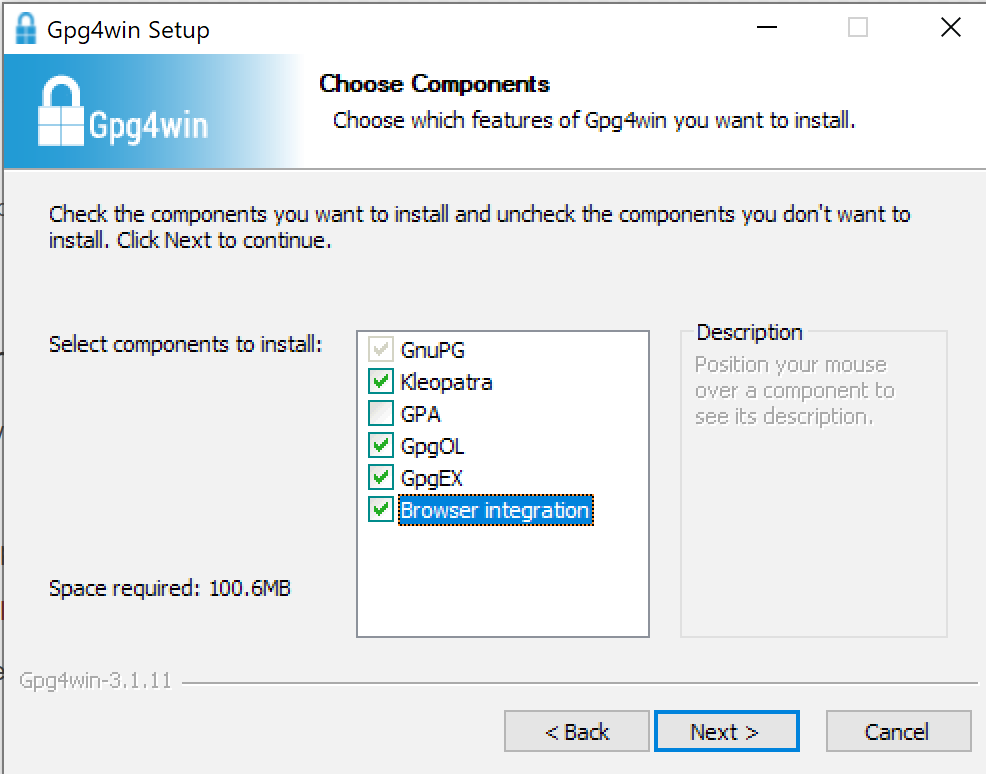
Since mine match, I just didn’t have to worry about it. I assume that it might be important to have parity between your committer identity and the name/email you put on your commits. On github the commits show up as “Verified”. After these steps, my commits started being automagically signed. On subsequent commits, it doesn’t ask me anymore. Outlook itself also supports X.509 and S/MIME, but of course does not work with the Gpg4win. This refers to the S/MIME support of GnuPG. Installed gpg-agent 1.9.10 using darwin. I told the keychain to remember my passphrase after entering it. On the next startup of Outlook, the menu Extras -> Options will contain the tab GpgOL : The tab GpgOL is divided into three areas: Once Gpg4win has been intalled, S/MIME functionality is activated in GpgOL. Running Mac OSX 10.4.6 (Darwin 8.6.0), gpg 1.4.3. This magically pops up a window asking for my passphrase. Step 6: Tell git to always sign my commits git config -global commit.gpgsign true

Step 5: Associate this GPG Key with your account on github At this point, GPG Keychain notices that a gpg key is in your clipboard and asks if you want to import it.
#Gnupg mac tutorial for mac
The most popular Mac alternative is AES Crypt, which is both free and Open Source.If that doesnt suit you, our users have ranked 39 alternatives to GnuPG and 13 are available for Mac so hopefully you can find a suitable replacement. While following instructions on Step 3, at one point you copy the public key to your clipboard. There are many alternatives to GnuPG for Mac if you are looking to replace it. Step 3: Create a gpg key via command line. I ended up ignoring this and moving on to the next step. We have listed essential details about Mac Finder, search options, troubleshooting solutions, and more.
#Gnupg mac tutorial how to
Step 2: Create a gpg key via GUI, but not really?Īfter I followed the GPG Suite wizard to create a gpg key, it for some reason did not show up in the GPG Keychain GUI. Learn how to use Finder on Mac like a pro in this guide. All of it basically came from a few clicks on the github help pages, though, so thanks for all the info, github.

Before using this tutorial, make sure you have GnuPG command line tools installed on your computer. These are available for Windows, Mac, and Linux.

I wanted to quickly document the process since the instructions are a little bit scattered. In this tutorial, we explain how to generate or update a PGP key using the GnuPG command line tools. I just went through a few steps to get gpg signing to work on my mac and show up on github.


 0 kommentar(er)
0 kommentar(er)
